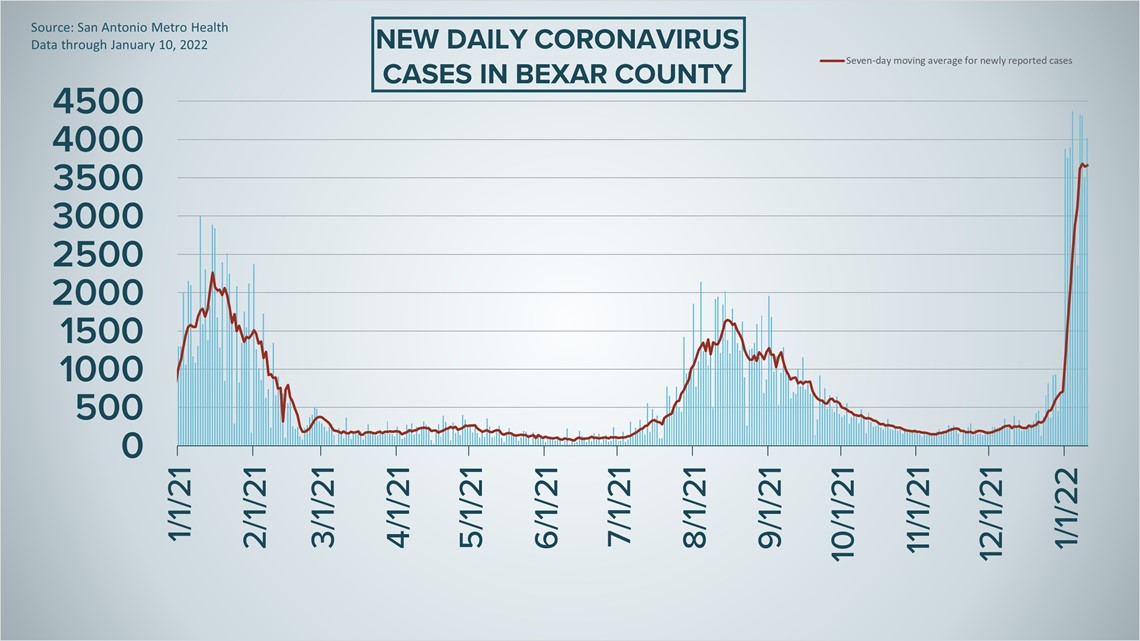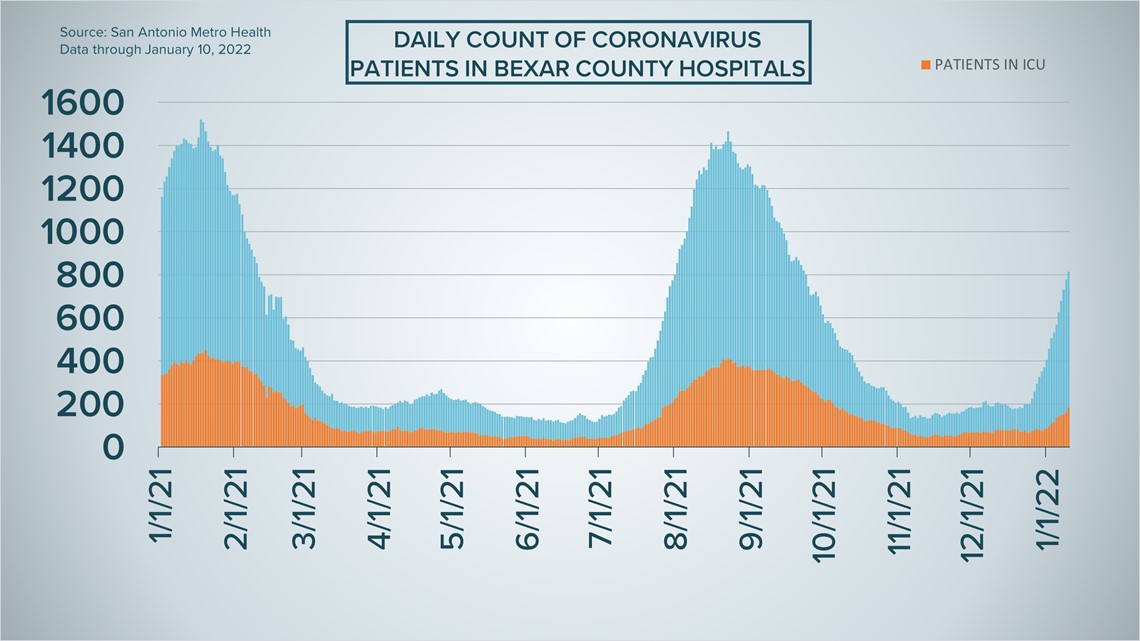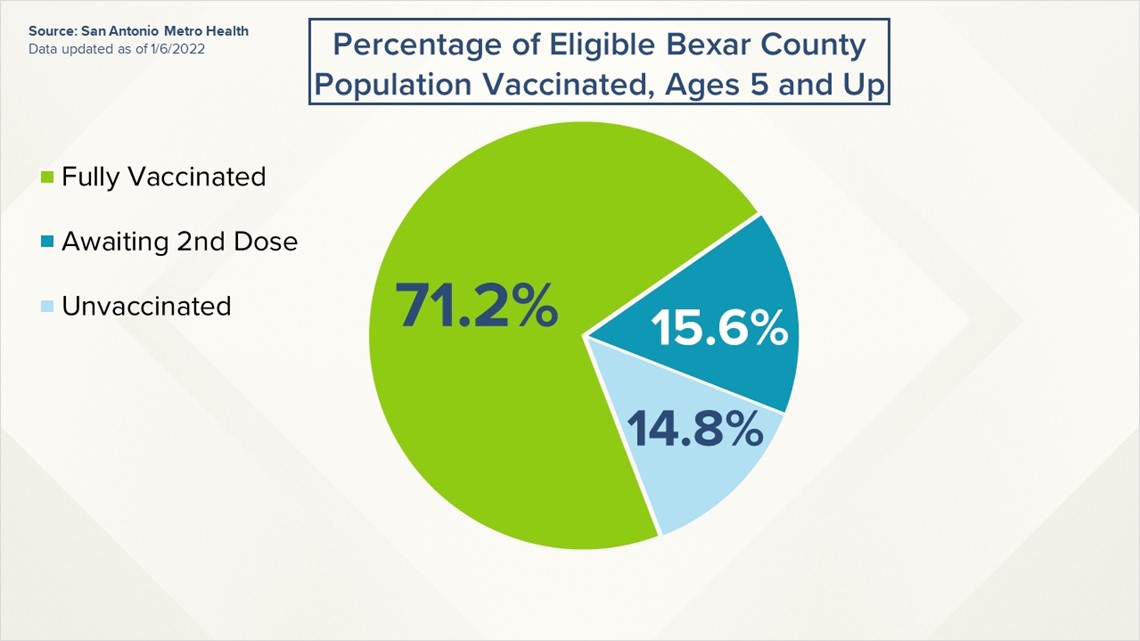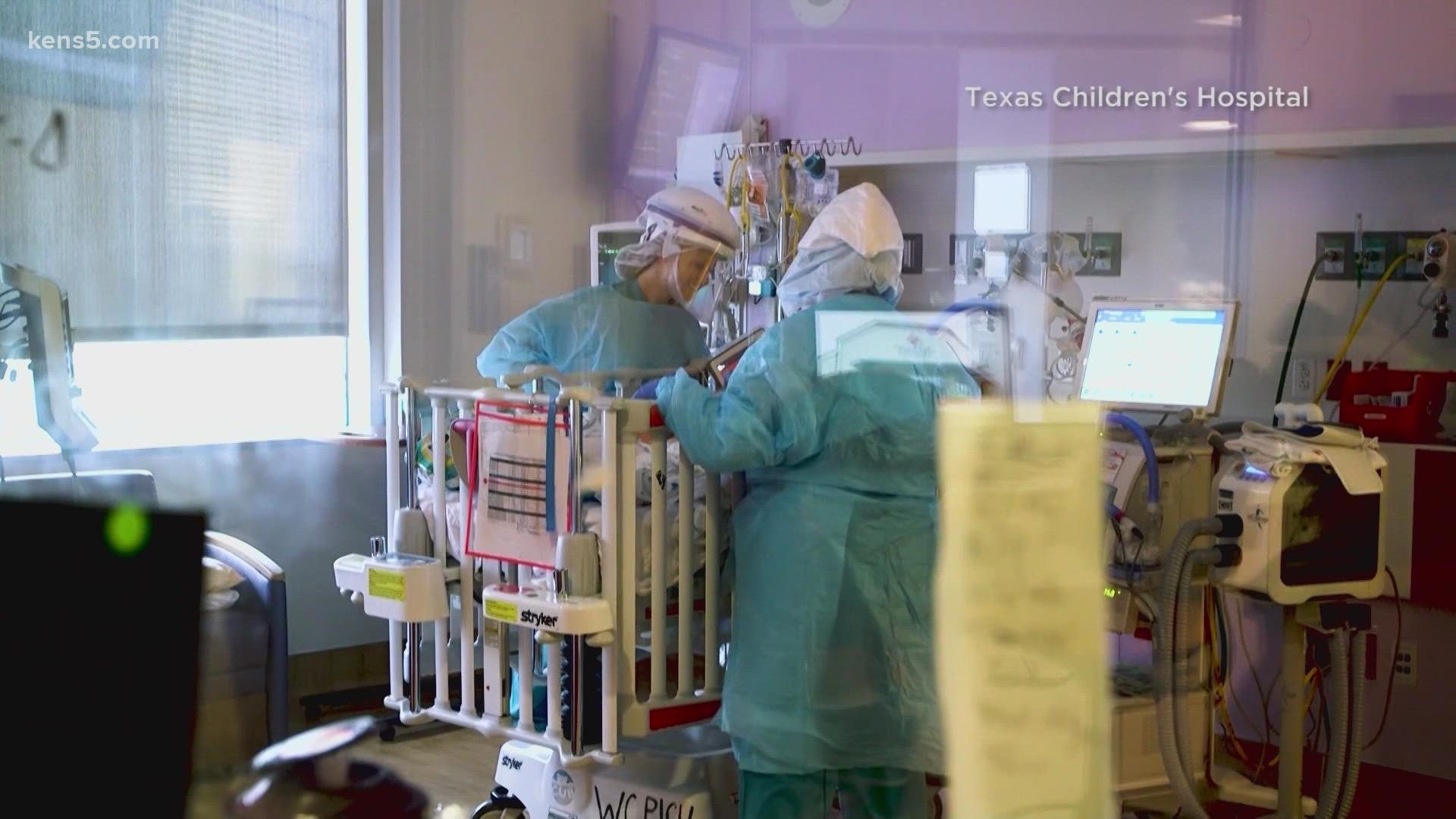SAN ANTONIO — For the fourth time in 2022 – and the fourth time in the entire pandemic – San Antonio-area health authorities reported more than 4,000 new COVID-19 diagnoses Monday as the highly contagious omicron variant prolongs the pandemic and hospitals are tested once again.
A total of 4,023 new cases (and 446 backlogged cases) were tallied by Metro Health, which also reported case totals of 4,311 and 3,489 for Saturday and Sunday, respectively. The new year has seen drastically higher numbers than 2021, in which Metro Health recorded only one day of 3,000 new cases.
More than 377,000 Bexar County residents have been diagnosed with the coronavirus since the pandemic began.
But hospitalizations are also rising at a steeper pace. According to Metro Health, 815 local residents are receiving treatment for coronavirus, which is up from 679 on Friday and the most since Sept. 23. Of those 815, 186 are in intensive care and 65 are using ventilators to help them breathe.
Three new deaths from virus complications were also reported, bringing the local total to 4,994.
In response to crowded hospitals, Mayor Ron Nirenberg and County Judge Nelson Wolff penned a letter to Gov. Greg Abbott requesting more help to confront the current COVID-19 surge in addition to the 411 nurses recently dispatched to San Antonio.
Meanwhile, more mass no-cost testing sites operated by the city are opening this week in the Alamo City, though Metro Health also says it's experiencing delays in providing results.
The ongoing pandemic is once again disrupting daily life in San Antonio, as COVID-19 halted "Hamilton" at the Majestic Theatre and put the brakes on San Antonio's in-person Martin Luther King Jr. March for a second straight year.
How Bexar County is trending




Vaccine Progress in Bexar County
The following numbers are provided by San Antonio Metro Health. A full breakdown can be found here.
- 1.644 million eligible Bexar County residents have received at least one dose of the coronavirus vaccine as of Thursday, Jan. 6, representing 86.8% of the county's population eligible (those over the age of 4) to receive a vaccination.
- 1.348 million eligible Bexar County residents are fully vaccinated as of Thursday, Jan. 6, representing 71.2% of the county's population eligible to receive a vaccination.


The CDC states that "when a high percentage of the community is immune to a disease (through vaccination and/or prior illness)," that community will have reached herd immunity, "making the spread of this disease from person to person unlikely."
The City of San Antonio breaks down the vaccination rates by zip code on Metro Health's Vaccination Statistics page.
Coronavirus in Texas
The total number of coronavirus cases in the state since the pandemic began grew by 47,237 on Monday, according to the Texas Department of State Health Services. That total includes 41,968 new confirmed cases and 5,269 new probable cases. More details can be found on this page.
Monday's figures bring the total number of Texans diagnosed with COVID-19 to more than 5.090 million.
An additional six Texans have died from virus complications, meanwhile, raising the statewide death toll to 75,287.
Coronavirus symptoms
The symptoms of coronavirus can be similar to the flu or a bad cold. Symptoms include fever or chills, cough, shortness of breath or difficulty breathing, fatigue, muscle or body aches, headache, new loss of taste or smell sore throat, congestion or runny nose, nausea or vomiting, and diarrhea, according to the Centers for Disease Control.
Most healthy people will have mild symptoms. A study of more than 72,000 patients by the Centers for Disease Control in China showed 80 percent of the cases there were mild.
But infections can cause pneumonia, severe acute respiratory syndrome, kidney failure, and even death, according to the World Health Organization. Older people with underlying health conditions are most at risk.
Experts determined there was consistent evidence these conditions increase a person's risk, regardless of age:
- Chronic kidney disease
- COPD (chronic obstructive pulmonary disease)
- Obesity (BMI of 30 or higher)
- Immunocompromised state (weakened immune system) from solid organ transplant
- Serious heart conditions, such as heart failure, coronary artery disease, or cardiomyopathies
- Sickle cell disease
- Type 2 diabetes
- The CDC believes symptoms may appear anywhere from two to 14 days after being exposed.
Human coronaviruses are usually spread...
- Between people who are in close contact with one another (within about 6 feet).
- Through respiratory droplets produced when an infected person coughs, sneezes or talks. These droplets can land in the mouths or noses of people who are nearby or possibly be inhaled into the lungs.
- Some recent studies have suggested that COVID-19 may be spread by people who are not showing symptoms.
Help stop the spread of coronavirus
- Stay home when you are sick.
- Eat and sleep separately from your family members
- Use different utensils and dishes
- Cover your cough or sneeze with your arm, not your hand.
- If you use a tissue, throw it in the trash.
Find a Testing Location
City officials recommend getting a COVID-19 test if you experience fever or chills, cough, shortness of breath or difficulty breathing, fatigue, muscle or body aches, headache, new loss of taste or smell, sore throat, congestion or runny nose, nausea or vomiting, or diarrhea.
Here's a Testing Sites Locator to help you find the testing location closest to you in San Antonio.
Latest Coronavirus Headlines
- Nirenberg and Wolff pen letter to Gov. Abbott requesting more help to confront COVID surge
- More mass COVID-19 testing sites coming to San Antonio
- USPS ready to deliver COVID-19 home test kits, postmaster general says
- Spurs have several players in health & safety protocols and Dejounte Murray's possible All-Star nod | Locked On SpursCOVID-19 halts in-person San Antonio MLK March once again
- What's the best way to tell if it's a cold, the flu or COVID?
- Fake coronavirus testing sites popping up across San Antonio | Here's how to tell if it's legitimate
- City of San Antonio and Community Labs opening three new COVID testing sites

